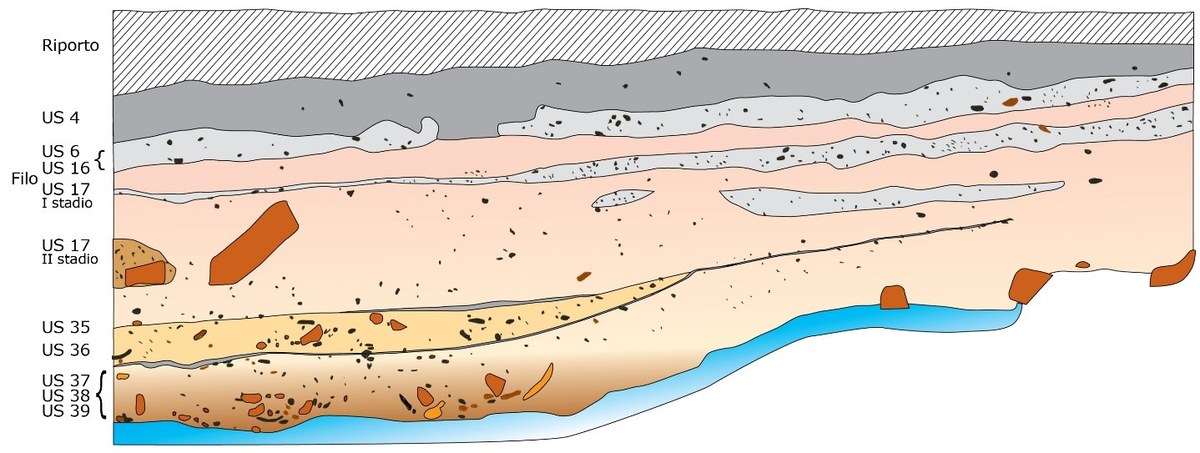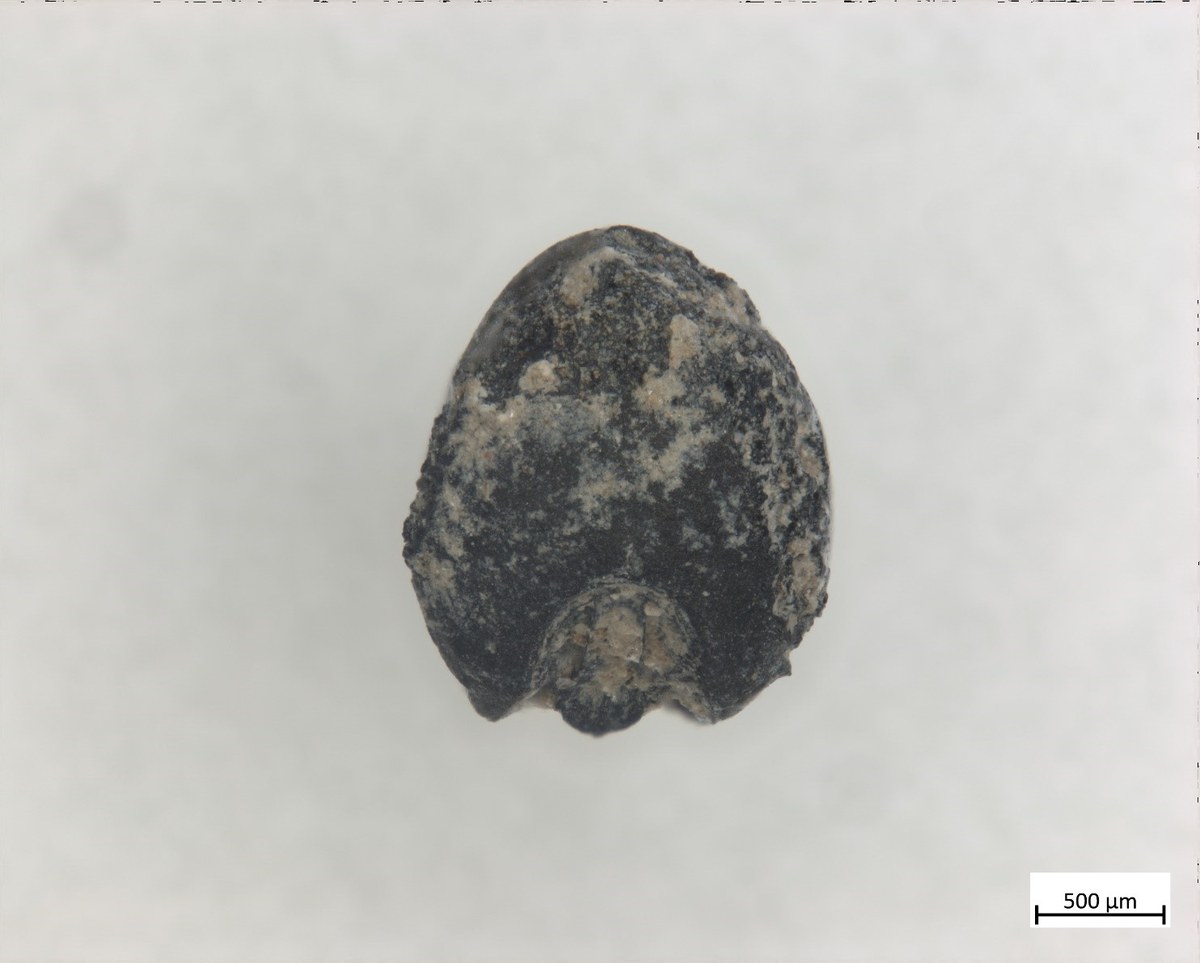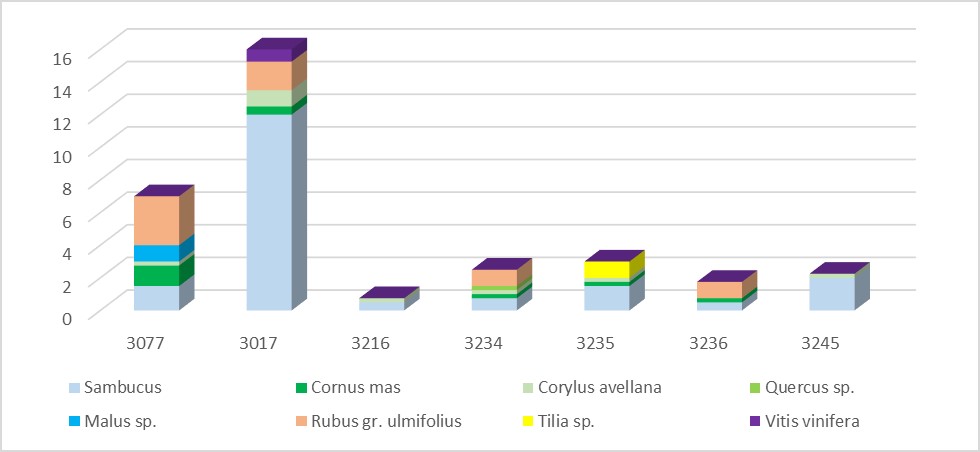- Home
- Project Apri sottomenù
- UPLAND ARCHAEOLOGY WORKSHOP Apri sottomenù
-
Abstracts
Apri sottomenù
- Wieke de Neef (Ghent University / Otto-Friedrich University Bamberg)
- Francesco Carrer (School of History, Classics and Archaeology, Newcastle University (UK))
- Umberto Tecchiati (University of Milan)
- Tesse Stek (KNIR - Royal Netherlands Institute in Rome)
- Riccardo Rao (University of Bergamo)
- Fabio Saggioro, Nicola Mancassola (University of Verona)
- Roberto Maggi, LASA (Laboratorio di Archeologia e Storia Ambientale), University of Genova
- Andrea Cardarelli, Andrea Conte (University of Rome "La Sapienza")
- Federico Zoni (University of Bergamo)
-
Short presentations
Apri sottomenù
- SHORT PRESENTATIONS PROGRAMME
- Putzolu et al., The 2nd Millennium BC in the northern Apennines
- Giorgi et al., New insights into the upland landscape of ancient Epirus, Southern Albania
- Carra, Subsistence economy in the Bronze Age in the northern Apennines upland
- Gaucci et al., Mapping mobility in the Apennines: The Reno Valley between the 6th-4th century BCE and the contemporary period
- Cirelli et al., Insediamenti di altura nell’Appennino Romagnolo e Toscano nel medioevo
- Betori et al., Amatrice: da castello a città
- Del Fattore, Upland landscapes and settlements strategies in the Central-Southern Apennines (1000 BC-2023 AD)
- Conversi et al., The site of Albareto cà Nova
- Bottazzi et al., Attorno al Monte Titano (739 m s.l.m.). Ricerche archeologiche e paleoambientali in Repubblica di San Marino
- Conversi et al., Il sito tardoatico – medievale d’altura della Piana di S. Martino , Pianello Val Tidone (PC)
- Cortesi et al., Archeologia dei paesaggi in una vallata appenninica: il progetto “Val Fantella” (Premilcuore, FC)
- Barbariol, Farms abandonment in Iceland
- Garattoni, Doss Penede (Nago, TN): progettare e costruire un insediamento minore nell’Alto Garda in epoca romana
- Santandrea, Detecting and Mapping Hilltop Sites between the Cesano, Misa, and Nevola River-Valleys
- Bonazzi et al., “Media Valle del Cedrino”: a region between uplands and plateaus
- Zanotti, Back to Monte della Croce
- Monticone et al., Un approccio di archeologia museale al ri-studio del sito neolitico di Chiomonte-La Maddalena (Piemonte, Italia). Revisione ed aggiornamento dei dati dal 1988 al 2023.
- Facciani et al., Exploring the funerary landscape of the Samarkand piedmont area
- Kaur and Poddar, Colonial Churches of Shimla: Public Archaeology as a Tool for Engagement and Outreach
- Datta, Upland Buddhist Monastic Complexes and the Pala Kingdom: Reviewing the Highland-Lowland Relationships in Ancient Bengal
- Staff
- Contacts
- Events calendar
- Seminars Apri sottomenù
- NEWS Apri sottomenù
Carra, Subsistence economy in the Bronze Age in the northern Apennines upland
Marialetizia Carra
ArcheoLaBio, Centro di Ricerche di Bioarcheologia, Alma Mater Studiorum, Università di Bologna
At present, the archaeobotanical studies concerning the upland sites of the northern Apennines are sporadic compared to the lowland sites. Furthermore, the techniques of sampling, treatment and analysis of plant remains are often outdated. Therefore, an overall picture of the subsistence economy of the Bronze Age is lacking. Fortunately, a greater interest in these marginal areas has reawakened in recent years. Especially material culture and settlement structures are the subject of study, palaeoenvironmental analyzes are less frequent.
Monterenzio Vecchio (BO) and Faieto (RE) are two sites which are the subject of personal palaeocarpological research on upland sites.
Monterenzio Vecchio is located in the Tuscan-Emilian Apennines at an altitude of 600 meters and was excavated between 2004 and 2012 by the University of Bologna (prof. Maurizio Cattani) and the competent Superintendence. The structures brought to light are use floors, terraces, hearths and post holes. The chronology of the site is between the Middle Bronze Age 3 and the Recent Bronze Age 1[1].
The Faieto site is located on the ridge that separates the catchment basin of the Enza from that of the Crostolo. Faieto is located at an altitude of 690 meters and was excavated between 1997 and 2000 by the Civici Musei of Reggio Emilia (dr. James Tirabassi) and by the competent Superintendency. The remains of a housing structure, placed on a terrace of anthropic origin have been found. Also in this case, the chronology obtained from the material culture is between the Middle Bronze Age 3 and the Recent Bronze Age 1[2]. Although in the same chronology, the two sites differ from a cultural point of view: Monterenzio recalls the sub-Apennine facies, Faieto is inserted in the Terramarian cultural sphere.
[1] Guerra 2015; Guerra et al., 2018.
[2] Tirabassi 1999; Tirabassi 2003.

Fig. 1. Excavation section of the Faieto settlement.
Soil samples were taken during the excavation field and subsequently the samples were subjected to manual flotation with small mesh sieves for the recovery of plant macro-remains. The samples from Monterenzio are almost entirely studied, while the data from Faieto are preliminary[3]. The chronological phases investigated concern the Recent Bronze Age levels.
The results of the analyzes show several similarities between the sites. Cereal growing appears to be the main source of food in the two settlements; barley, various species of wheat and millet are the most represented plants.
[3] Carra 2012; Carra 2013.

Fig. 2. Grain of charred millet (Panicum miliaceum).
Millet (Panicum miliaceum) is a cereal that spread throughout Italy during the Bronze Age. Its short vegetative cycle makes it suitable as a second crop or as an alternation with other cereals (beginning of crop rotation). Several species of wheat were probably grown in the same fields: barley (Hordeum vulgare), emmer (Triticum dicoccum), einkorn (Triticum monococcum), but above all spelt (Triticum spelta), which spread during the Bronze Age. In general, hulled wheat is preferred to naked wheat, which is perhaps more susceptible to parasites. “New glume wheat” (Triticum timopheevii type, of Neolithic tradition) was found in Monterenzio but not in Faieto, this difference is probably due to the partiality of the study of the samples. Oats (Avena sp.) and rye (Secale cereale) are sporadic occurrences. In particular, it is not clear whether oats should already be considered a cultivated species or a weed, harvested and consumed together with other cereals.
Pulses are less documented and include broad beans (Vicia faba), lentils (Lens culinaris), grass pea (Lathyrus sativus) and vetch (Vicia sp.). Flax (Linum usitatissimum), opium poppy (Papaver somniferum) and other cultivated species have not yet been found in Faieto and Monterenzio.
The reconstruction of the environment in the two sites is obtained through the study of the spontaneous species. The herbaceous species are variously present and mainly testify to crop weeds and anthropogenic plants. It must be emphasized that in "dry" environments spontaneous plants tend to be preserved less than in waterlogged sediments.
The tree and shrub species, on the other hand, testify to man's interest in spontaneous fruits. In this case there are greater similarities between the two sites, but also, for example, with the sites located in the plains. The interest in fruit is therefore homogeneous for the Bronze Age and concerns: figs (Ficus carica), acorns (Quercus sp.), hazelnuts (Corylus avellana), apples (Malus sp.), pears (Pyrus sp.), hawthorn (Crataegus sp.), blackberries (Rubus gr. ulmifolius), etc. Dogwood (Cornus mas) and vine (Vitis vinifera) are certified and seem to prove their use for fermented drinks.

Fig. 3. The fruits found in Monterenzio Vecchio.
Research comparisons and perspectives
Comparison with the data from Monterenzio and Faieto with the other upland sites of the northern Apennines is limited by the scarcity of carpological research done. Monte Castellaccio (BO), Monte Leoni (PR) and Grotta del Farneto (BO)[4] are the other sites examined. This research dates back to the last century and needs to be integrated with the study of new sites, excavated according to multidisciplinary criteria.
On the contrary, lowland sites are mostly studied and research teams have been set up to analyze settlements such as Solarolo (RA), Montale (MO), Tabina di Magreta (MO), Terramara di S. Ambrogio (MO), Pragatto (BO), Noceto (PR), Anzola dell'Emilia (BO)[5], to mention the main ones.
All these researches, at the moment, seem to highlight a homogeneity in the exploitation of agricultural and environmental resources, but the data available to us are probably not sufficient to confirm this first idea. For this reason, the opening of new excavations foreseen by the "Upland Archeology" project will be of fundamental importance. The main purposes will be to investigate the modalities of the upland population and the relationships with the lowland settlements. The same perspectives, of course, concern paleo-environmental and paleo-economic reconstruction.
From a methodological point of view, the programming of a sampling and the possibility of a homogeneous treatment of the samples will be of fundamental importance for the achievement of the proposed aims.
[4] Bandini Mazzanti et al. 1996; Ammerman et al. 1976, Ruffini 1975.
[5] Carra 2009; Carra 2013; Mercuri et al. 2006; Mercuri et al. 2015; Bandini Mazzanti e Taroni 1988; Miari et al. 2019; Desantis et al. 2011; Bernabò Brea, Cremaschi 2009.
Bibliography
Ammerman A., Butler J., Diamond G., Menozzi P., Pals J., Sevink J., Smit A., Voorrips A. 1976, Rapporto sugli scavi a Monte Leoni: un insediamento dell'età del Bronzo in Val Parma, PA 12, pp. 127-154.
Bandini Mazzanti M., Taroni I. 1988, Frutti e semi dello scavo di Tabina di Magreta (XV e VI/V sec. a.C.), in Modena dalle origini all'anno Mille: studi di archeologia e storia: Modena, Galleria civica, gennaio-giugno 1989, pp. 233-234.
Bandini Mazzanti M., Mercuri A. M., Barbi M. 1996, I semi/frutti dell'insediamento dell'età. del Bronzo di Monte Castellaccio (76 M S.L.M.,44"21'n Ll42'8, Imola-Bologna), in; La collezione Scarabelli, Preistoria, Imola, pp. 129-416.
Bernabò Brea M., Cremaschi M., 2009, Acqua e civiltà nelle Terramare, la vasca votiva di Noceto. Milano, 264 pp.
Carra M. 2009, Alimentazione, ambiente ed economia di sussistenza su base vegetale. Studio archeobotanico preliminare dei macroresti provenienti dal sito di Solarolo, in IpoTesi di Preistoria 2, pp. 281-291.
Carra M. 2012, Per una storia della cerealicultura in Italia Settentrionale dal Neolitico all’età del Ferro: strategie adattive e condizionamenti ambientali, Tesi di Dottorato inedita in Archeologia, Ciclo XXIV, Università di Bologna.
Carra M. 2013, Le indagini archeobotaniche nell’area dell’Emilia Orientale e della Romagna, in: Economia e ambiente nell’Italia padana dell’Età del Bronzo, Bari, pp.331-358.
Desantis P., Marchesini M., Marvelli S. 2011, Anzola al tempo delle Terremare, Centro Stampa della Regione Emilia Romagna, Bologna.
Guerra L. 2015, Strategie insediative, economiche e scambi culturali nell'Appennino bolognese e romagnolo nell' età del Bronzo, Tesi di Dottorato inedita in Archeologia e storia dell'arte, XXVI Ciclo, Bologna.
Guerra L., Vaccari B., Maini E., Carra M., Vianello G., Cremonini S. 2018, L’abitato d’altura dell’età del Bronzo di Monterenzio Vecchio (Bologna), in L’Emilia tra Antica e Recente età del Bronzo, in Atti della XLV Riunione Scientifica dell’Istituto Italiano di Preistoria e Protostoria, dell’Emilia-Romagna, Modena 26-31 ottobre 2010, pp.165-173.
Mercuri A.M., Accorsi C.A., Mazzanti M.B., Bosi G., Grandi G.T., Cardarelli A., Labate D., Olmi L., Torri P., 2006, Cereal fields from the Middle-Recent Bronze Age, as found in the Terramara di Montale, in the Po Plain (Emilia Romagna, Northern Italy), based on pollen, seeds/fruits and microcharcoals, in The archaeology of crop fields and gardens, Edipuglia, pp. 251-270.
Mercuri A.M., Montecchi M.C., Pellacani G., Florenzano A., Rattighieri E., Cardarelli A., 2015, Environment, human impact and the role of trees on the Po plain during the Middle and Recent Bronze Age: Pollen evidence from the local influence of the Terramare of Baggiovara and Casinalbo in Review of Palaeobotany and Palynology, vol. 218, July 2015, pp. 231-249.
Miari M., Boccuccia P., Barbieri M., Bosi G., Carra M., Cremaschi M., Curci A., De Angelis A., Gabus R., Lemorini C., Maini E., Mariani G.S., Mercuri A.M., Pavia F. Scacchetti F., Stellacci S.M., 2019. Gli scavi alla Terramara di Pragatto (BO): dai primi dati al progetto di ricerca. In: Maffi M., Bronzoni L. & Mazzieri P. (a cura di) Trent’anni di tutela e ricerca preistorica in Emilia occidentale: Atti del Convegno di Studi in onore di Maria Bernabò Brea, Parma, Palazzo della Pilotta: 8-9 giugno 2017, Archeotravo Piacenza, pp. 229-239.
RUFFINI, E. 1975, Considerazioni sui vegetali carbonizzati rinvenuti nella grotta del Farneto preso Bologna, in Rivista di storia dell'Agricoltura, XV, 1, pp. 51-72.
TIRABASSI J., 1999, Faieto, l’età del Bronzo in montagna, (catalogo della mostra). Musei
civici di Reggio Emilia, Comune di Casina. La nuova Tipolito, Felina (RE).
TIRABASSI J., 2003, Faieto di Casina (RE). Risultati delle prime tre campagne di scavo. In
Atti della XXXV riunione scientifica, Le comunità della preistoria italiana. Studi e ricerche
sul Neolitico e le età dei metalli. Istituto Italiano di Preistoria e Protostoria, Firenze